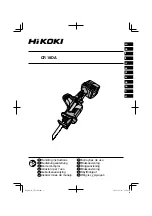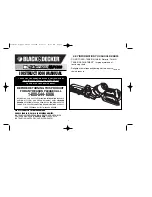
13
Plunge cuts:
•
Set the depth stop to the maximum cutting
depth and manually open the lower blade guard just
enough so that the blade touches the workpiece.
•
When the machine plunges, the circular saw must be held very securely, otherwise there is the danger of
a kickback!
•
Switch the machine on, allow it to reach full speed and plunge the saw.
•
Once it is fully in the cut, begin to push the machine in the forward direction.
•
Switch the machine off once cutting is completed and allow it to come to a full stop before removing
•
from the workpiece.
CLAMP THE WORKPIECE
Secure the workpiece properly. The workpiece should be straight and firmly clamped to avoid possible
movement and pinching as the cut nears completion. Provide adequate support for long or wide workpieces.
Never position large or long workpieces so that they bend in the middle or at the cutting face. This can lead to
the saw blade jamming and kicking back. Instead, support the workpiece with several wooden battens, close
to the cutting face. Confirm that the blade has come to a complete stop before removing or securing the
workpiece, or changing the workpiece angle.
CAUTION: Keep the cord away from cutting area to prevent it from becoming entangled in the
workpiece.
Do not force the cut. Let the saw do the cutting at the rate of speed permitted by the type of cut and
workpiece.
GUIDE RAIL
Guide rails are available to assist in making precise straight cuts
and enhance safety. (These are an optional accessory) The guide
rail may be secured with C-clamps if desired. There are 2 guide
clearance adjustors for optimum fit and safety. Adjust these
equally so that there is no looseness, yet the base still slides
freely. See fig.10
The rubber sighting strip:
The sighting / anti-splinter strip must be cut to size along its full length before the first use. The rubber strip
must be backed by a workpiece when it is cut for the first time.
Fig.10
Guide Clearance Adjustor






































